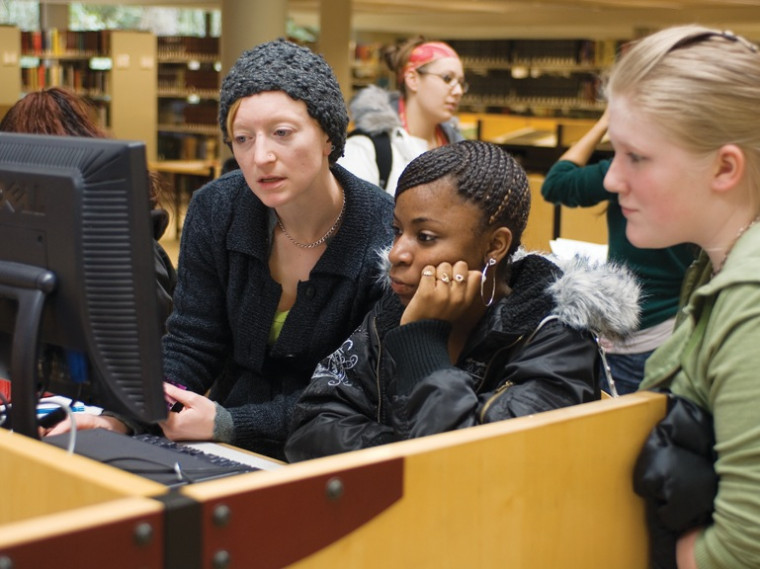Heroes of Color
To many teens of color who are studying U.S. history, the long parade of textbook heroes–mostly white, mostly male–lacks relevance and vitality. But what if these students were encouraged to think critically about their textbooks, identify the missing narratives, and study their own heroes of color?
Open gallery

by Shelly Meyer
To many teens of color who are studying U.S. history, the long parade of textbook heroes–mostly white, mostly male–lacks relevance and vitality. But what if these students were encouraged to think critically about their textbooks, identify the missing narratives, and study their own heroes of color?
Mitch Reyes, assistant professor of communication, teaches The Politics of Public Memory in the undergraduate college. Public memory is a rapidly growing interdisciplinary field that has its roots in collective memory, the notion that ideas are shared through a common culture. From a collective set of remembrances, we form identities–what it means to be American, white, black, Latino, Jewish, and so on.
To help bring the content of the course to life, Reyes partnered with the Spanish-English International School (SEIS) in North Portland to develop a new program called Heroes of Color. Students in Reyes’ Lewis & Clark class mentor students from SEIS, located on the Roosevelt High School campus, to develop presentations about historically significant people of color who are often absent in American history textbooks. For spring semester, the list included Mohandas Gandhi, Thurgood Marshall, Rudolf Fisher, Jackie Robinson, Cesar Chavez, Malcolm X, and Rigoberta Menchu Tum.
The high school students attend an introductory session at the College and then meet in small groups with Lewis & Clark students on the Roosevelt campus three times throughout the semester.
“The program’s basic premise is that children of color have very little to identify with in their history texts,” says Reyes. “Although some progress has been made, these public memory texts are still dominated by white males–they give only a nod to women and minorities. We want students to understand that these texts are not omnipotent law–we want them to be skeptical, to think critically, and to be proud of their own heritage.”
Sarah Epstein teaches U.S. history at SEIS. Forty-three sophomores from her classes participated in the Heroes of Color project with Reyes’ students. In addition to the benefits of learning more about key figures in history, Epstein values the program’s ability to introduce her students to the college environment.
“The field trip to Lewis & Clark was one of the best parts of the program,” says Epstein. While on campus, her students went on a tour, had lunch, and began researching their projects in Watzek Library with Reyes’ students. “The more people the kids connect with who have college degrees–or who are pursuing college degrees–the better. Right now, a teacher may be the only person in their lives with a degree.”
Interest in Reyes’ public memory course is high–he had to turn away undergraduates this spring. That interest bodes well for the program and, ultimately, for the high school students. “Children of color should have their own heroes,” he says. When young people learn about heroes of color from the past, Reyes hopes, they may come to realize they can become the heroes of the future.
More L&C Magazine Stories
Lewis & Clark Magazine is located in McAfee on the Undergraduate Campus.
MSC: 19
email magazine@lclark.edu
voice 503-768-7970
fax 503-768-7969
The L&C Magazine staff welcomes letters and emails from readers about topics covered in the magazine. Correspondence must include your name and location and may be edited.
Lewis & Clark Magazine
Lewis & Clark
615 S. Palatine Hill Road MSC 19
Portland OR 97219

